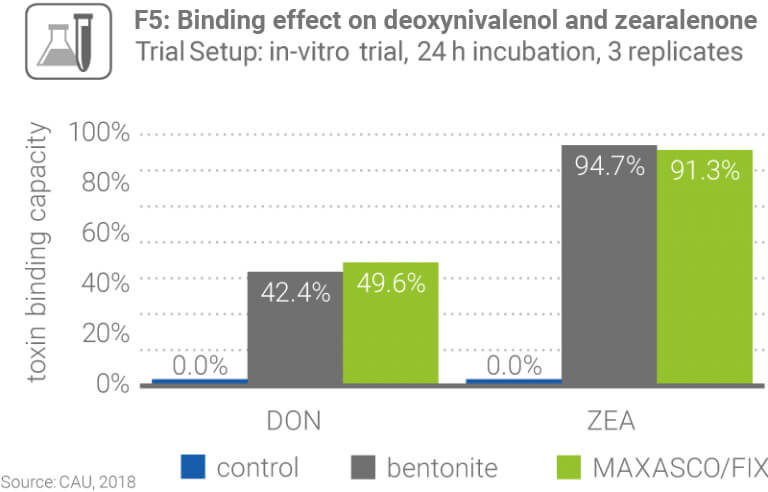
Processed seaweed meal with the valuable nutrients of Ascophyllum nodosum with prebiotic and immunomodulating effects.
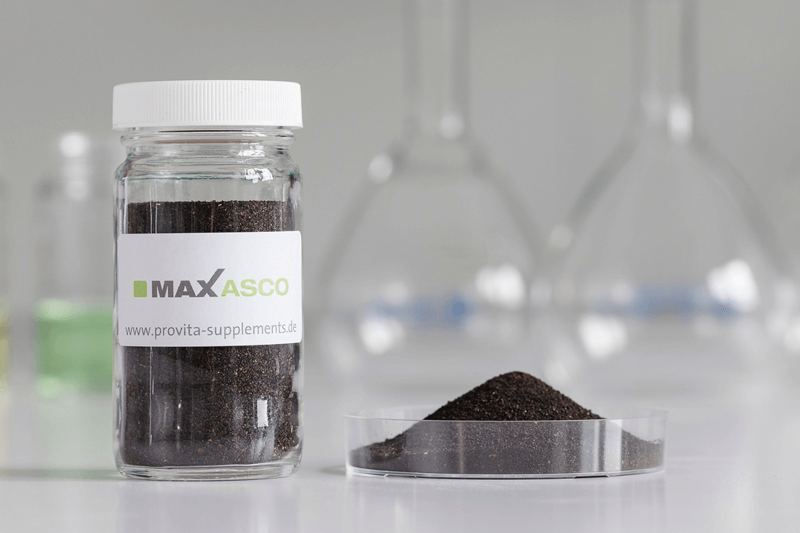

The color of products can vary.
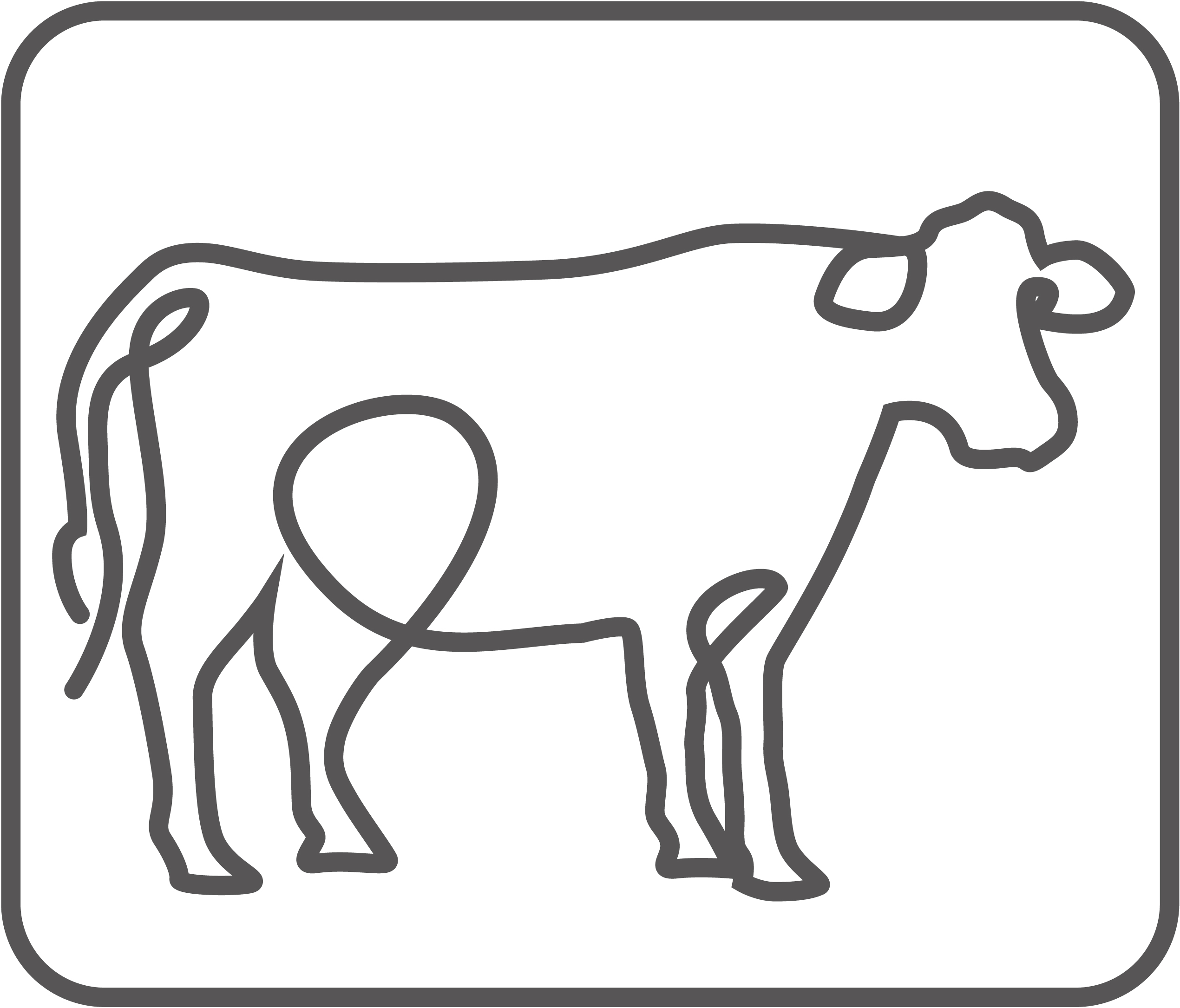
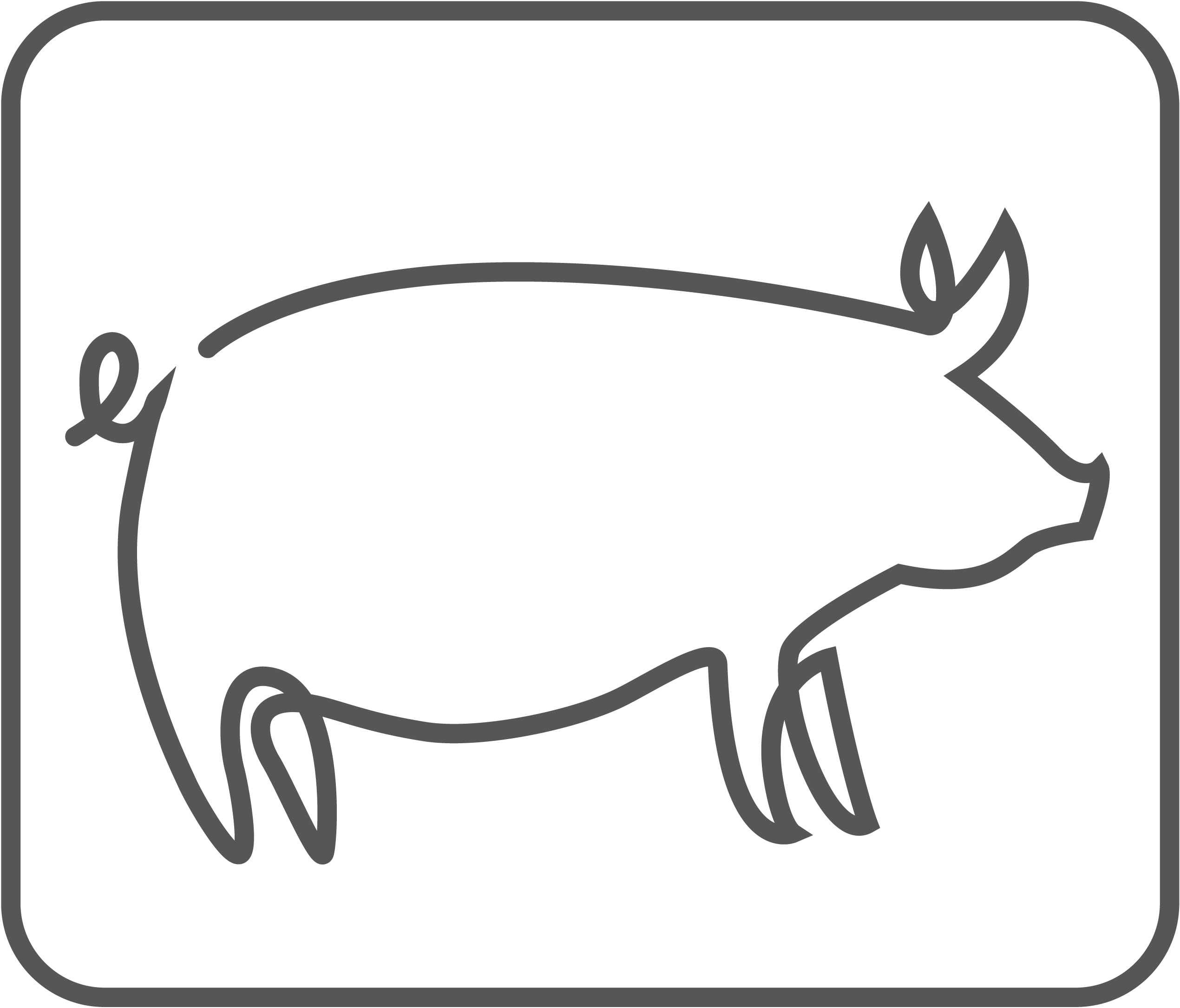
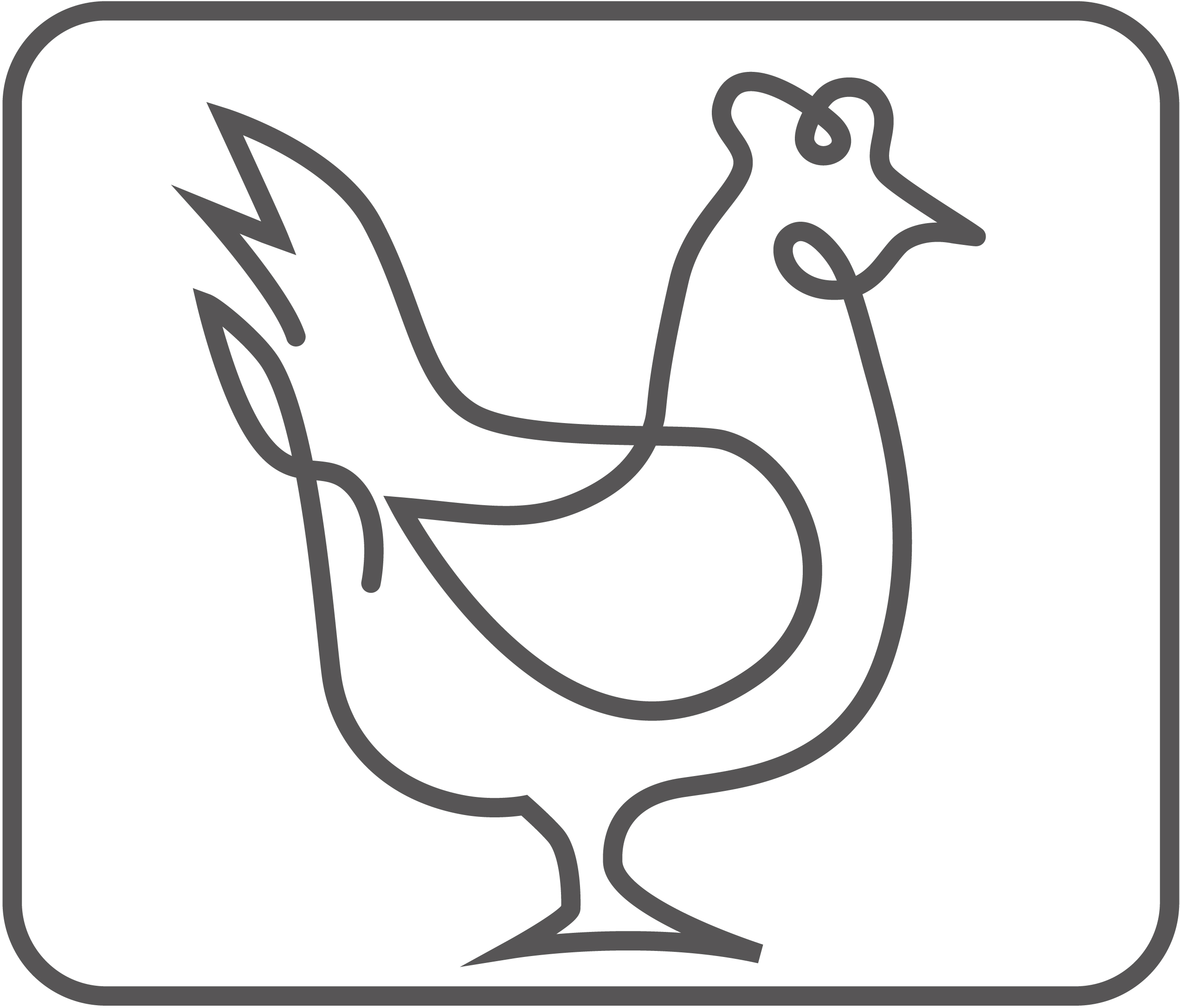
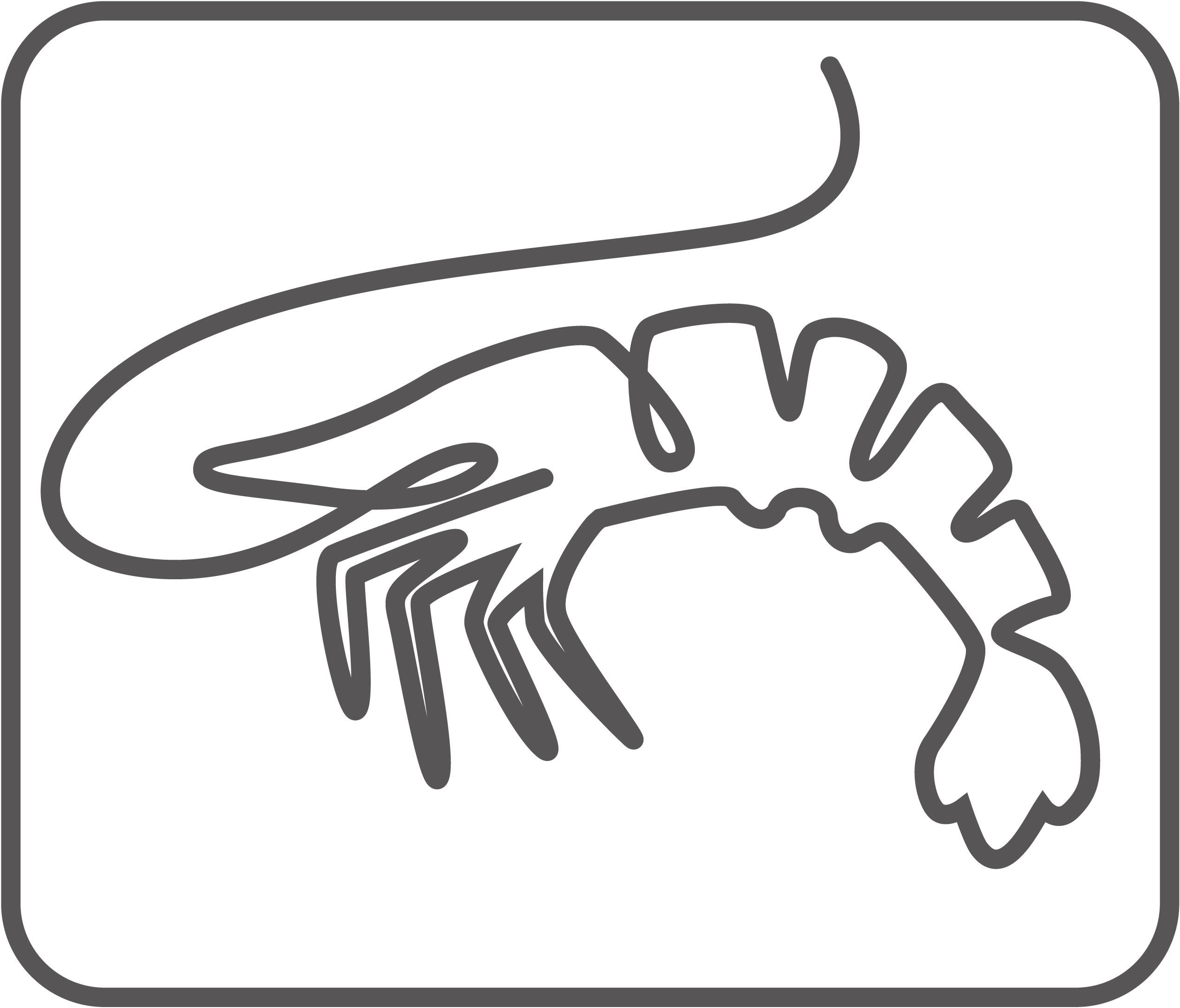
MAXASCO products are based on seaweed meal from brown algae (Ascophyllum nodosum), containing valuable marine plant nutrients. These are released and made available to the animal by an unique processing technology. Moreover, MAXASCO can effectively bind mycotoxins and is available in combination with a binding agent as a mycotoxin binder.

Processed seaweed meal with the valuable nutrients of Ascophyllum nodosum with prebiotic and immunomodulating effects.


Toxin binder based on brown seaweed Ascophyllum nodosum for effective binding of heavy metals and various mycotoxins.
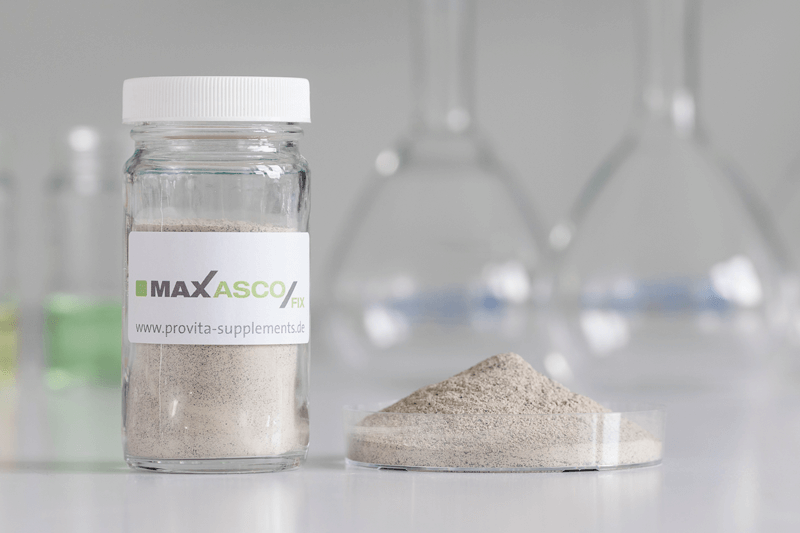
Algae are a broad variety of photosynthetically active organisms, that generate their biomass from carbon dioxide, water and minerals. Due to their maritime origin, algae are rich in macro- and microelements and vitamins. In addition, the brown algae Ascophyllum nodosum MAXASCO is based on, is rich in natural marine polysaccharides, such as Alginate, the ß-Glucan Laminarin and Fucoidan. These components in conjunction with marine tannins are known to have prebiotic and immune-modulating effects, while the sulfated polysaccharide Ascophyllan is particularly known for its antimicrobial properties.
PROVITA SUPPLEMENTS has successfully introduced a novel technology, unlocking the full spectrum of activities of marine plant nutrients from Ascophyllum nodosum. After harvest from the Celtic Sea, the algae are processed carefully, undergoing a standardized swelling process and are ground and dried afterwards. The result is a granulated material with excellent mixing properties for convenient incorporation to any type of feed or premix. Furthermore, the processing positively influences the rheological properties of the algae, with the soluble fiber components Laminarin, Alginate and Fucoidan linked with absorption-, retention- and swelling behavior of the digesta, increasing its homogeneity and viscosity. Supplementation of MAXASCO facilitates the contact of feed components with digestive enzymes, helping to improve digestive performance.

By improving homogenization of intestinal chyme, MAXASCO supports nutrient absorption from the feed. In a trial with 400 broiler chicks, fed a starter diet from days 1 to 14 and a grower diet from days 15 to 35, MAXASCO was supplemented at different inclusion rates. Supplementation of MAXASCO clearly proved to have a positive effect on daily weight gain in broilers at all dosages, with highest gains at the highest dosage.
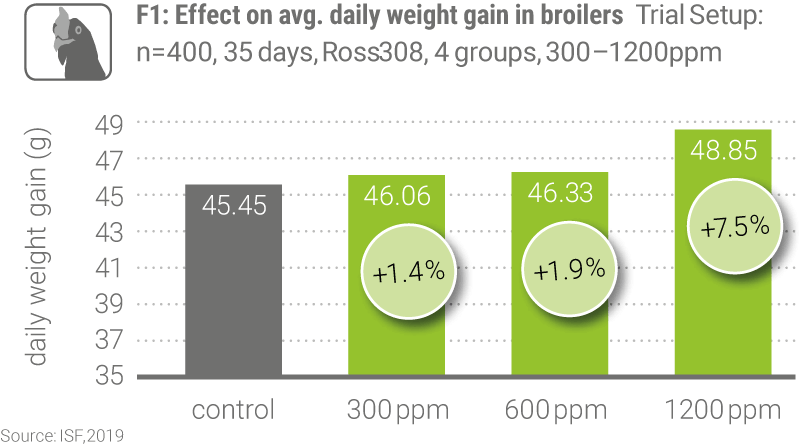
In a feeding trial with weaned piglets, supplementation with MAXASCO at the recommended dosage led to an improvement of 5.6 % in average daily gain throughout the whole trial period (F2). Especially during first two weeks after weaning, supplementation showed to have positive impact on growth performance. Subsequently, MAXASCO was tested in a university feeding trial with 75 days old fattening pigs (F3). Supplementation of MAXASCO significantly improved body weight gain and feed conversion during the whole period of the trial, even though both parameters were already on a high level.
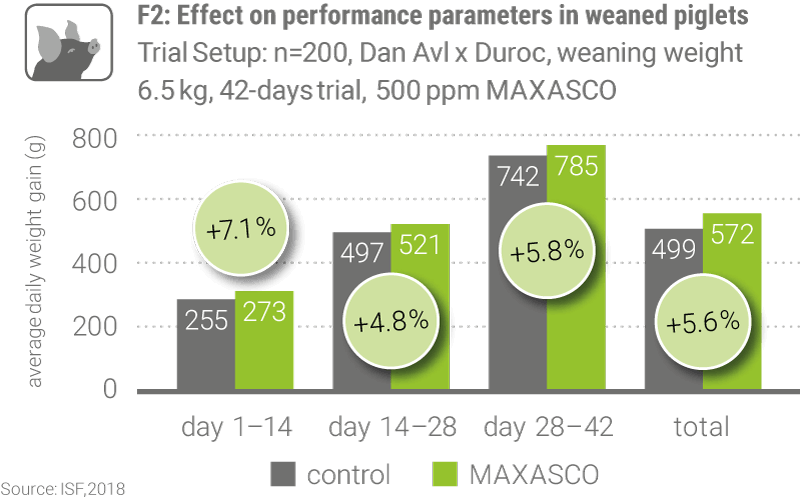
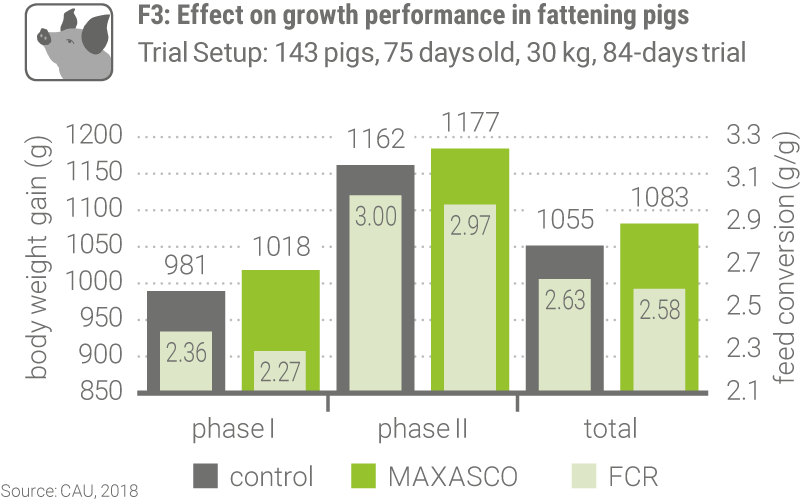
In a challenge trial, Shrimps were inoculated with AHPND (Acute Hepatopancreatic Necrosis Disease), also called EMS (Early Mortality Syndrome) which is a pathogen threatening productivity in shrimp production systems worldwide. Addition of MAXASCO at a dose of 1,000 ppm to the diets on shrimps infected with AHPND delayed the onset of mortality by 14 hours, but did not affect final mortality compared to the control group, while addition of 3,000 ppm MAXASCO not only delayed the onset of mortality but also reduced final mortality by 26.7 points to 20 % (F4).
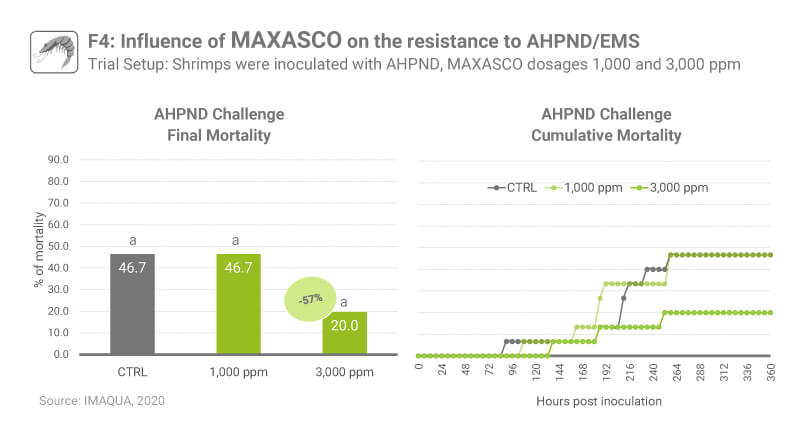

Even when present only at low concentrations in the feed, mycotoxins can cause chronic toxicity. Animals might not show symptoms typical for mycotoxicosis, but performance may be decreased. An in-vitro experiment was used to understand the toxin-binding capacity of MAXASCO and bentonite inside MAXASCO/FIX. The experiment was conducted under conditions prevalent inside the small intestines. As shown in F5, both materials were able to effectively bind mycotoxins deoxynilavenol and zearalenone, which is known to be a toxin difficult to bind.
